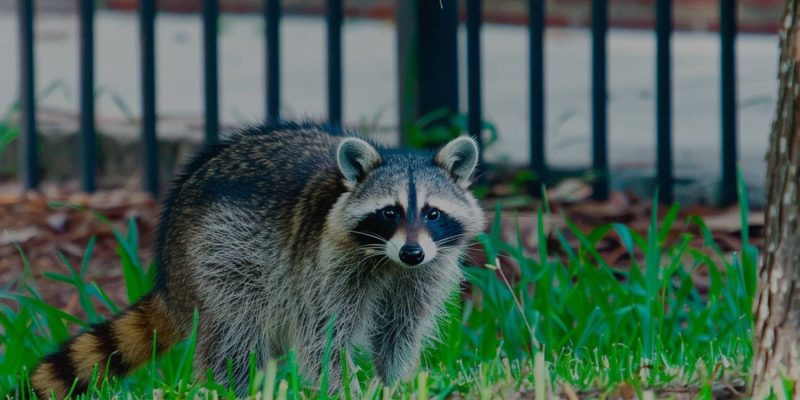Have you ever wondered if the fence in your backyard is enough to keep wild animals out? Whether it’s a curious raccoon or a hungry deer, the ability of these animals to climb, jump, or dig under fences can be quite surprising. Let’s dive into how you can fortify your defenses against our furry friends.
Understanding Wildlife Behavior
Common Climbers in Residential Areas
In our backyards, we face challenges from local wildlife, especially climbers. Raccoons are well-known for their ability to navigate fences, but they’re not the only ones. Surprisingly, even alligators, though not common climbers, have shown the ability to scale fences under certain conditions. This information is crucial for homeowners near water bodies or in areas where these reptiles are present.
Ensuring our fences are designed to deter such unexpected climbers is essential for the safety of both our families and the animals. By understanding and respecting the capabilities of these creatures, we can create barriers that protect our homes while coexisting peacefully with nature.
Designing Effective Barriers
Fence Height and Material
When it comes to keeping wildlife out, the height and material of your fence are key. For deer, a common visitor to many gardens, fences need to be tall—about 8 feet or more. This is because deer can jump quite high, and a short fence won’t be much of a challenge for them. The material can vary; you can choose from wood, metal, or vinyl, depending on what matches your home and garden best.
For climbers like raccoons, the material becomes more important. A smooth surface, such as vinyl, can prevent them from getting a good grip, making it harder for them to climb over.
Underground Solutions for Burrowers
Not all animals try to go over a fence; some will try to go under. Rabbits, for example, are known to dig their way into gardens. To stop them, your fence needs to go underground. Burying the bottom of the fence a foot deep into the ground, or using a buried wire mesh, can block those digging attempts. This method ensures that when they try to dig, they hit a barrier that keeps your garden safe.
Overcoming the Climber Challenge
Raccoons and other agile climbers can be quite resourceful. To outsmart them, consider fences with a smooth surface and no horizontal bars for them to use as ladders.
Another effective design is a fence that leans outward at the top, which makes it difficult for animals to maintain their grip and climb over. Adding roller bars or a slippery top can also deter climbers, keeping your yard secure from these ingenious intruders.
…finding the right balance between keeping wild animals out and ensuring the safety and aesthetic appeal of your home.
By thoughtfully designing your fence, and considering the height, material, and specific challenges posed by different types of wildlife, you can create a barrier that protects your property effectively. It’s about finding the right balance between keeping wild animals out and ensuring the safety and aesthetic appeal of your home.
Innovative Fencing Solutions
Electric Fences as Deterrents
Electric fences can be a game-changer when it comes to wildlife control. They offer a gentle but effective deterrent to animals considering a venture into your garden.
The mild shock they deliver is not harmful but is enough to teach animals to keep their distance. This solution is especially effective for larger animals like deer or potentially, alligators, making them think twice before attempting to cross your property line again.
Combining Physical and Sensory Barriers
Beyond the physical barrier of a fence, incorporating sensory deterrents can enhance your defense against wildlife. Motion-activated lights can startle animals like raccoons or deer, who prefer to sneak around in the dark.
Similarly, noisemakers can scare off intruders without causing harm. These tools, when used together with a solid fence, create a multi-layered defense system that addresses various wildlife challenges effectively.
Electric and sensory deterrents add an important layer of protection to your fencing strategy, offering non-invasive ways to keep wildlife at bay. By combining these innovative solutions with traditional fencing, homeowners can ensure their property remains safe and undisturbed.
The Role of Professional Fence Installers
Expert Assessment and Custom Solutions
Hiring professionals for your fence installation ensures you get not just a fence, but a tailored solution to your wildlife challenges. These experts evaluate your property, consider local wildlife, and suggest the best fence design, height, and materials.
Their experience means they can offer innovative solutions like the perfect blend of physical barriers and sensory deterrents customized for your specific needs.
Quality Installation and Longevity
A professional installation guarantees that your fence will stand the test of time and wildlife encounters. Properly installed fences are more durable and effective, providing peace of mind that your garden and home are protected.
Professionals ensure the fence is anchored correctly, uses the right materials, and incorporates any additional deterrents seamlessly for maximum effectiveness.
Navigating Regulations and Ensuring Humane Practices
Fence installation isn’t just about putting up barriers; it’s also about complying with local regulations and ensuring the safety of local wildlife. Professional installers are knowledgeable about the laws and can help you choose the most humane, effective solutions to protect both your property and the animals.
With the support of professional fence installers, homeowners can rest assured their fence is not only effective but also ethical and compliant with local regulations. This peace of mind is invaluable in maintaining a safe and harmonious relationship with the surrounding wildlife.
Homeowner Challenges and Solutions
Cost vs. Effectiveness
One of the biggest concerns for homeowners is balancing the cost of a fence with its effectiveness in keeping wildlife out. High-quality materials and professional installation can be expensive, but they are investments in the long-term safety and integrity of your property. Consulting with professionals can also help identify cost-effective solutions that do not compromise effectiveness.
TIP
To manage costs, consider phased installations or prioritize areas of your yard that are most vulnerable to wildlife.
Maintenance and Durability
Another challenge is ensuring that your fence remains durable and requires minimal maintenance over time. Choosing materials that are resistant to weather and the specific types of wildlife in your area is crucial.
For example, vinyl fencing might have a higher upfront cost than wood, but it requires less maintenance and is more durable against the elements and potential chewers like rabbits. Regular inspections and minor repairs can also extend the life of your fence, keeping it as an effective barrier against wildlife for years to come.
Legal and Ethical Considerations
Homeowners must also navigate legal regulations related to fence installations and ensure their choices are humane for the wildlife. It’s important to research local ordinances and possibly consult with wildlife experts or local authorities to ensure your fencing solution is both legal and ethical.
Strategies like incorporating escape routes for animals that might accidentally enter your yard and choosing deterrents that do not harm wildlife are ways to address these concerns thoughtfully.
Addressing the challenges of cost, maintenance, and legal/ethical considerations can seem daunting, but with the right approach and expert advice, homeowners can create effective and humane barriers against wildlife.
Adapting to Local Wildlife
Research and Customization
Every neighborhood has its unique wildlife challenges. Understanding the specific animals that frequent your area is the first step to designing an effective fence. Whether it’s raccoons, deer, or the occasional alligator, your fencing solution should be customized to address these particular visitors.
Researching local wildlife habits and consulting with professionals can provide insights into the best fencing strategies. For instance, a fence that’s effective against burrowing animals might not deter climbers. Tailoring your approach ensures that your efforts are not only effective but also efficient, using resources wisely to protect your property.
By adapting fencing solutions to local wildlife, homeowners can create defenses that are specifically designed to address the challenges they face. This targeted approach is both practical and efficient, ensuring that your property remains a safe and peaceful haven for your family.
Conclusion
Creating a wildlife-friendly yet secure boundary around your home is essential for peaceful coexistence with local fauna. By understanding wildlife behavior, choosing the right fence design, and consulting with professionals, you can ensure your property is protected. Remember, the goal is to deter, not harm, ensuring that both your family and the surrounding wildlife can thrive safely and harmoniously.

